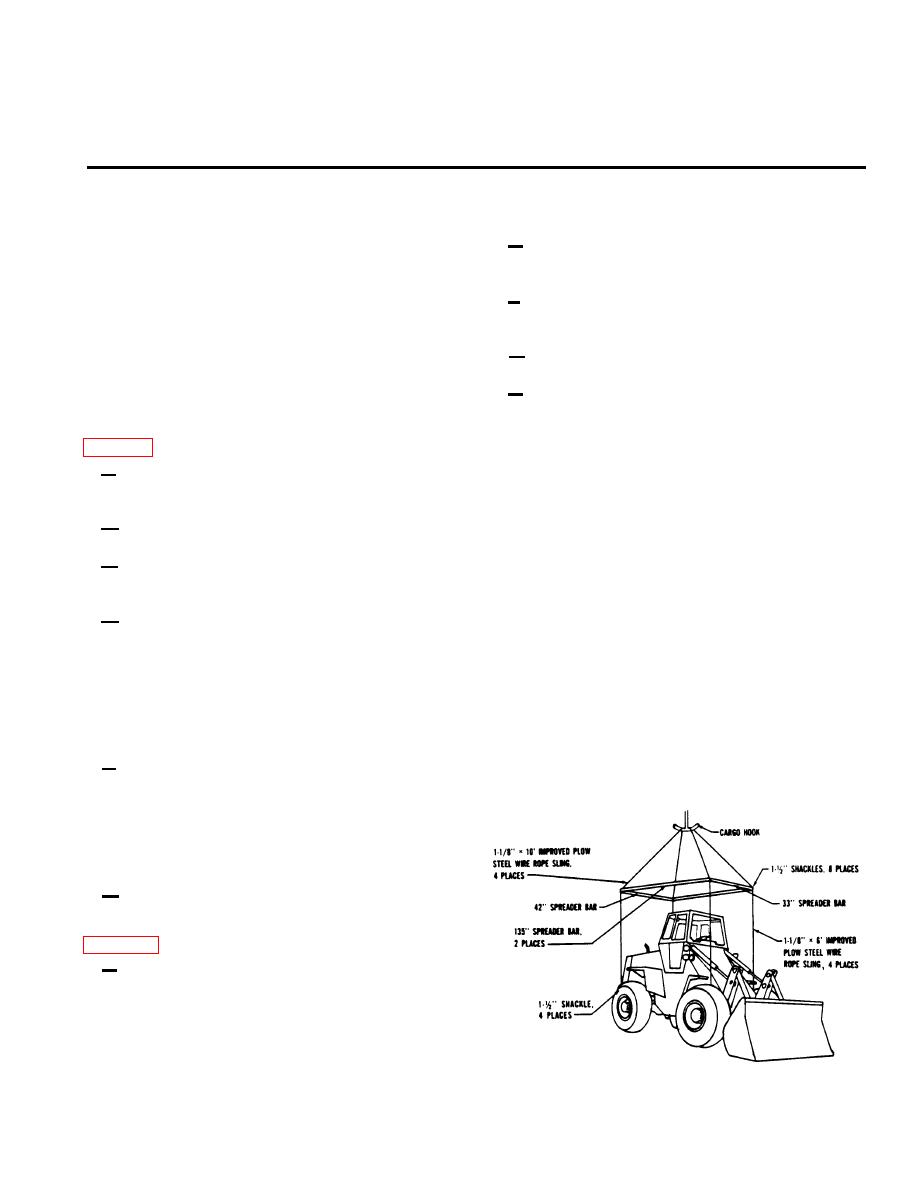 |
|||
|
|
|||
|
Page Title:
Chapter 6. MARINE AND TERMINAL TRANSPORTABILITY GUIDANCE |
|
||
| ||||||||||
|
|
 TM 55-3805-262-14
CHAPTER 6
MARINE AND TERMINAL TRANSPORTABILITY GUIDANCE
Section I. GENERAL
e. All lifts should have sufficient guide lines at-
6-1. Scope
tached to control the swing of the vehicle while
This chapter provides marine and terminal trans-
suspended.
portability guidance for movement of the MW24C
f. Vehicle fuel tank must not be more than one-
scoop loader. It covers significant technical and
fourth full, and battery terminals must be discon-
physical characteristics, as well as safety considera-
nected and taped.
tions, and prescribes the materials and guidance
g. Vehicle transmission must be placed in the
required to prepare, lift, tie down, and discharge the
neutral position with control lever wire-tied.
scoop loader.
h. Parking brakes must be firmly set and air
tanks drained.
6-2. Safety
In addition to the safety precautions contained in
6-3. Water Shipment
a . The activity offering the vehicle for transport
The MW24C scoop loader can be transported by a
will notify the carrier if ammunition or explosives
variety of barges and lighters and by most seagoing
are to be transported with the item.
cargo vessels.
b . Fire extinguishers must be available during
NOTE
all loading and discharge operations.
The methods described in this chapter for
c . Slings and other items used in loading and
lifting and securing are suggested proce-
discharge operation should be inspected for condition
dures. Other methods of handling and
and adequate capacity.
stowage may be used provided they will
d . Personnel should be cautioned not to walk
ensure safe delivery without damage.
under vehicle being lifted.
Section II. LOADING AND SECURING
6-4. General Rules
a. Stowage. Below-deck stowage should be pro-
vided whenever possible. In general, good stowage
means placing the scoop loaders as close together as
possible with minimum space between outer item
and sweatboards. Breakable parts should be pro-
tected, and spare parts should be stowed in or near
parent item.
b. Lifting. Correct lifting points are the lifting
eyes located at the upper front and rear sides of the
scoop loader. A typical lifting diagram is shown in
c. Loading. The MW24C scoop loader will be
loaded on seagoing cargo vessels in its minimum
configuration. It may be loaded aboard landing
craft, beach discharge lighters, heavy and medium
amphibious lighters, and landing ships under its
own power or by cranes of adequate capacity. It can
also be driven or towed aboard roll-n/roll-off vessels,
or onto decks of barges from a pier when tidal
Figure 6-1. Lifting diagram for MW24C scoop loader
conditions are suitable and ramps are available.
(an eight-wire sling and four spreader bars are used).
6-1
|
|
Privacy Statement - Press Release - Copyright Information. - Contact Us |